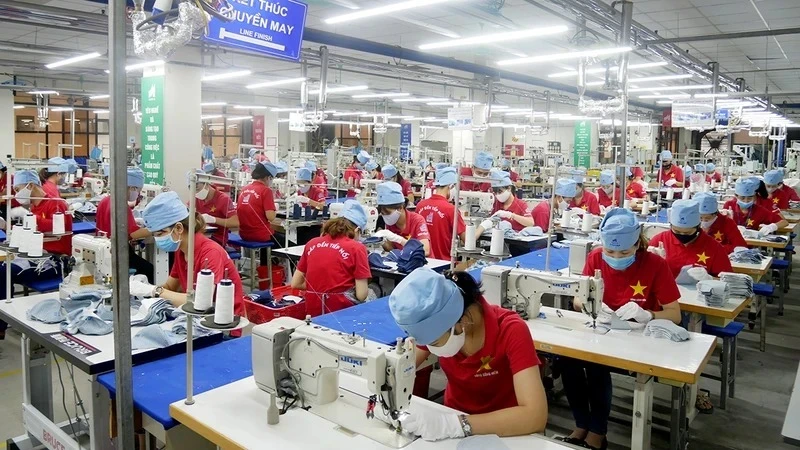
As of April 15, total export turnover Vietnam's textile and garment industry reached 11.8 billion USD, up 8.7% over the same period in 2024. This result is considered to have positive significance in the face of unpredictable market fluctuations. Enterprises are effectively taking advantage of the "golden time" to accelerate the export of goods and products to soon complete the target.
Make good use of the opportunity
General Director of Garment 10 Corporation Than Duc Viet said that in the first three months of the year, the unit's total revenue reached 1,250 billion VND, an increase of 12% over the same period in 2024.
However, difficulties began to appear from the beginning of April due to information on the application of US Countervailing Duty for Vietnamese goods, leading to a period of order interruption. The imposition of a 10% tax by the US government for 90 days announced later helped the unit boost production, striving to complete the second quarter target.
The last 6 months of the year are predicted to be a really difficult period, with negative and unpredictable signals from the market. Enterprises themselves have also built corresponding response scenarios, while waiting for the results of Vietnam's negotiations with the US to know the specific tax rate.
In the immediate future, the company will proactively seek to diversify markets and customers, control the supply of raw materials well to meet the requirements, and at the same time promote the service, training, and retail business sectors as well as increase the proportion of domestic revenue to complete the annual plan.
According to Chairman of the Board of Directors of Hung Yen Garment Corporation (Hugaco) Nguyen Xuan Duong, in recent months, all businesses have achieved good growth, with the Corporation alone achieving a 10% increase compared to the same period in 2024. All units in the system currently have orders until the end of July and are negotiating orders for the following months.
Besides the advantages, businesses also face difficulties due to the fluctuations in tariffs imposed by the US. In particular, large importers from the US will renegotiate to seek sharing, if they cannot meet the requirements, they will move production elsewhere.
“What makes many businesses worried is that the tax rates imposed between countries directly competing with Vietnam are not equal, which will cause Vietnam to gradually lose its competitiveness, and orders will shift to other countries with lower costs. Therefore, businesses must develop response solutions to have a suitable development direction,” Mr. Duong emphasized.
Further analysis of US tariff fluctuations on Vietnam's textile and garment industry, Deputy Chief of Office of the Board of Directors Vietnam Textile and Garment Group (Vinatex) Hoang Manh Cam said that with a tax rate of 10%, the 90-day application period is considered the "golden time" for businesses to boost production and export of goods.
In addition, it is necessary to ensure the best regime for workers during this period to increase efficiency, have reserve resources, and compensate for the possibility of future order decline.
Up to now, the number of garment orders is being maintained and businesses are also focusing on production at the highest speed to realize the year's results as soon as possible. However, the yarn industry faced difficulties earlier, when some businesses had to stop operations and postpone orders because they could not supply the garment industry in time.
“After this period, a new level of tax and price may be formed, at which time businesses must accept this fluctuation. The US is the main export market of Vietnamese textiles and garments, so the goal must be maintained, not only simply profit and revenue but also the position of Vietnamese textiles and garments in the US market. The US market is the leading market, when it has affirmed its position and expanded its market share, it is inevitable that the position of Vietnamese textiles and garments in the global supply chain will be enhanced and attract the attention of major customers,” Mr. Cam emphasized.
Diversify customer market
Statistics from the Customs Department show that as of April 15, Vietnam's total textile and garment export turnover reached 11.8 billion USD, up 8.7% over the same period in 2024; major export markets all maintained positive growth (market share in the US increased from 36.3% to 38%; European Union from 9.1% to 9.4%; Japan from 10.8% to 11%, ...).
Regarding this issue, Chairman of the Vietnam Textile and Apparel Association (Vitas) Vu Duc Giang said that businesses need to proactively respond to market fluctuations in order to maintain growth momentum and soon reach the export turnover target of 48 billion USD set by the industry. The 22 new-generation free trade agreements that are currently and will soon take effect will create many opportunities for businesses to diversify markets, customers and product designs.
According to Vinatex Board of Directors Chairman Le Tien Truong, in this second quarter, the entire system needs to quickly implement existing orders by arranging production to increase overtime hours according to regulations, and have solutions to increase productivity to maximize profits in the second quarter, making reserves for the second half of the year difficult to predict.
Units must take full advantage of the short-term opportunity within 90 days to have enough resources to persevere with long-term goals. Successful completion of orders during this period will clearly demonstrate breakthrough capacity, responsibility as well as strong commitments to customers, build prestige and competitive advantage of Vietnam's textile industry in the coming period.
“In addition to the production campaign, the group also directed relevant departments to study the supply chain of raw materials, prioritize the use of fabric sources of enterprises in the system if they meet quality requirements, support enterprises to classify each item and market that is at risk of being affected by new tax policies to have a basis for negotiating with customers and finding suitable directions. The group also focuses on requiring transparency in rules of origin as well as compliance with regulations on anti-commercial fraud. At the same time, it directs enterprises to diversify products, supply chains, expand markets and customers to avoid dependence on a few existing markets,” Mr. Truong affirmed.
Source: https://baoquangninh.vn/tang-toc-xuat-khau-det-may-3355552.html



![[Photo] President Luong Cuong holds talks with French President Emmanuel Macron](https://vphoto.vietnam.vn/thumb/1200x675/vietnam/resource/IMAGE/2025/5/26/5069522dd8ef4a5caa06ed4685feb8ec)


![[Photo] Official welcoming ceremony for French President Emmanuel Macron and his wife on a state visit to Vietnam](https://vphoto.vietnam.vn/thumb/1200x675/vietnam/resource/IMAGE/2025/5/26/a830702ef72f455e8161b199fcefc24d)






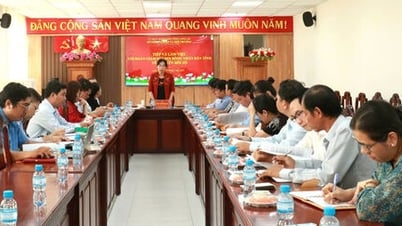











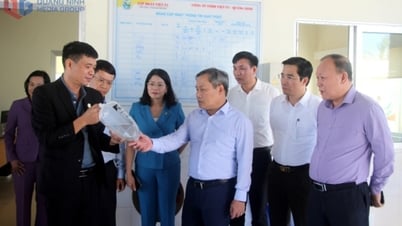


![[Photo] Pink ball and table tennis](https://vphoto.vietnam.vn/thumb/1200x675/vietnam/resource/IMAGE/2025/5/26/d9f770bdfda243eca9806ea3d42ab69b)
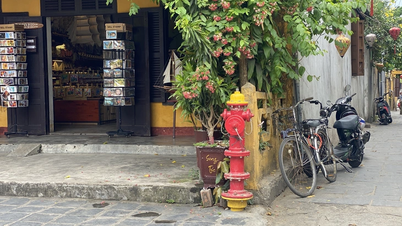











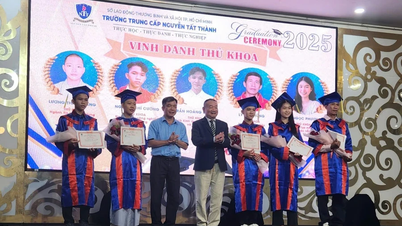

























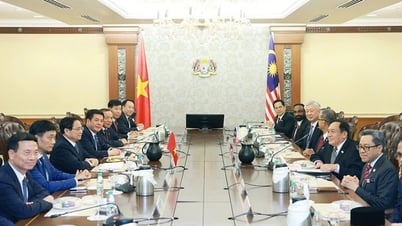





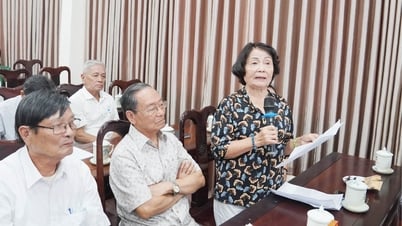






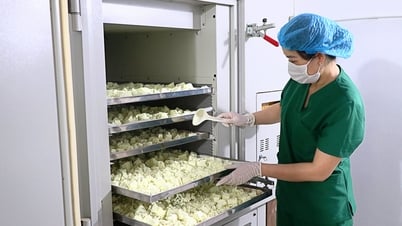









Comment (0)